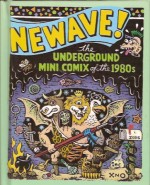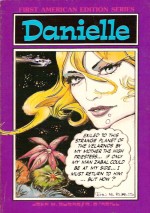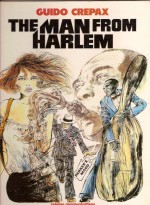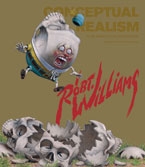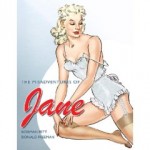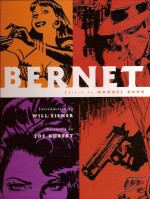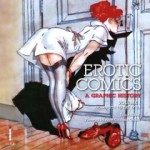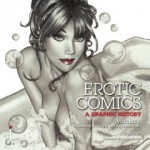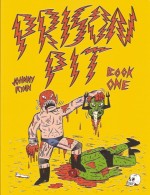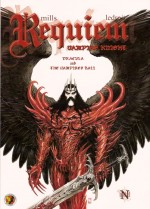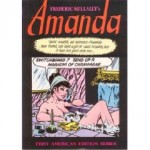
By Frederic Mullally, John Richardson & “Ken†(Ken Pierce Books)
ISBN: 978-0-91227-703-5
When I reviewed the comic strip collection Danielle recently I declaimed at long length about having to become an apologist for some of the themes and content of what used to be called “cheesecake†or “girly†strips – a genre stuffy old-fashioned Britain used to excel at and happily venerate. We’re that sort of culture: saucy postcards, carry-on films and ingenuously innocent smut.
As John Dakin points out in his introduction to this short-lived strip-siren, The Sun, original home of the lady in question, was the country’s best selling newspaper and was provocatively, proudly populist. That translated into low laughs and acres of undraped female flesh everywhere except the sports section – and even there when possible…
By 1976 the battle for female equality had mostly moved from headlines to business pages: the height of the much-maligned “Sexual Revolution†with women demanding equal rights, equal pay and fair treatment had passed (so isn’t it marvellous that they’ve got all those things sorted now?). Contraception-on-demand and burning bras were gone except for the provision of comedy fodder and men had generally returned to their old habits, breathing a heavy sigh of relief…
Amanda launched on January 26th 1976, written by journalist, editor (of left-wing magazine Tribune), columnist, novelist and political writer Frederic Mullally, and initially seemed a low key, low-brow reworking of his prestigious Penthouse satire ‘O Wicked Wanda!’ but there were marked differences for anybody looking below the satin-skinned surface.
Amanda Muller was the beautiful, sequestered heir to the world’s largest fortune, and once her old fossil of a father finally kicked the bucket she decided to become a teen rebel and have all the fun she’d missed growing up in an old castle with only prim staff and her cousins Wiley and Hunk for company. With thief turned companion Kiki, she determined to splurge and spree and have anything she wanted.
The strip ran for a year and the first illustrator was John Richardson, a highly gifted artist with a light touch blending Brian Lewis with Frank Bellamy who has worked practically everywhere in Britain from 2000AD to DC Thomson to Marvel UK as well as for specialist magazines such as Custom Car, Super Bike and Citizen’s Band. The introductory story sees Amanda – shedding her clothes at every opportunity – try to buy a title, only to fall foul of a Mafia plot to control Italian Nudist Beaches, before moving on to a “career†as a pop-star – which once more draws her into a world of unscrupulous sharks and swindlers…
Whilst looking for a new maid Amanda and Kiki next got embroiled in a continental burglary ring, before the author’s political interests resurfaced when brainy cousin Wiley was invited to display his new electronic Chess brain behind the Iron Curtain. Naturally physical Adonis Cousin Hunk wants to come along – it’s just before an Olympics after all – and the girls tag along just for kicks.
Since you just can’t trust a Commie they’re all soon in lots of trouble but naturally the frolicsome foursome escape with relative ease. The next adventure, and all the remaining strips, are illustrated by somebody who signs him (or her) self “Kenâ€, and who, I’m ashamed to say, I know absolutely nothing about. Competent, but a tad stiff and hesitant, and lacking the humorous touch of Richardson, I’d lay money on the enigma being an Italian or Hispanic artist – but I’ve been wrong before and I will be again…
Safely home again Amanda decided to create a feminist magazine entitled New Woman, and sent Kiki to interview the world’s greatest Chauvinist Pig – fashion designer “Bruno†– only to once more fall foul of crooks; although this time its kidnappers and embezzlers.
Still in editor mode the gang then head to super-sexist Banana Republic Costa Larga, just in time for the next revolution, infiltrate the “Miss Sex Object†beauty contest with the intent of sabotaging it, and conclude their globe-trotting by heading for a tropical holiday just as the local government is overthrown by a tin-pot dictator…
Despite my caveats this was series that started out with few pretensions and great promise; however the early loss of Richardson and, I suspect, Mullally’s intellectual interest soon quashed what charm it held. Nevertheless this collection is a good representative of an important period and a key genre in British cartooning history.
Some of the gags are still funny (especially in our modern world where celebrity equates with exactly where drunken, stoned rich people threw up last) and if you’re going to ogle and objectify naked women at least well-drawn ones can’t be harmed or humiliated in the process. Also I don’t think a drawing has ever contributed to a girl’s low self esteem or body issues, At least, I hope not…
© 1984 Express Newspapers Ltd. All Rights Reserved.

